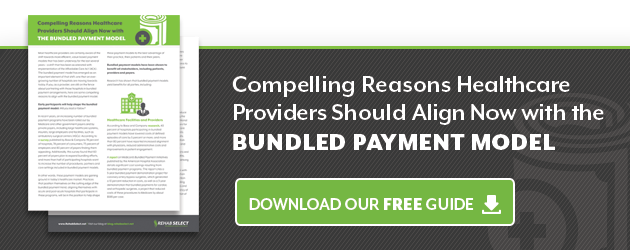 2010 marked the passing of the Affordable Care Act, which was intended to overhaul the existing U.S. healthcare system. Its central goal was to provide higher quality and more efficient healthcare at decreased costs, made available to expanded numbers of people.
2010 marked the passing of the Affordable Care Act, which was intended to overhaul the existing U.S. healthcare system. Its central goal was to provide higher quality and more efficient healthcare at decreased costs, made available to expanded numbers of people.
As an extension of the act, the Bundled Payments for Care Improvement (BPCI) initiative was rolled out in 2011. The BPCI initiative speaks directly to the mission of the Affordable Care Act, centrally in its incentive-driven method of improving quality of care and implementing an efficient process of distributing payment to healthcare facilities.
The BPCI initiative stipulates that Medicare will send a bundled payment for a patient's medical episode to a facility or healthcare provider. This contrasts significantly from the traditional route, which is known for its messy, inefficient, and potentially more expensive system. BPCI was unraveled as a voluntary system with four models that broadly define the system in different ways. Although each model is unique in the system it defines, Models 2 and 3 comprise the vast majority of national BPCI facilities. Across the state of Alabama specifically, six facilities elected for Model 2 and five facilities elected for Model 3, while none opted for either Model 1 or 4.
As is to be expected, many U.S. citizens, doctors and patients alike, are hesitant about new healthcare initiatives. However, the benefits of the BPCI far outweigh the drawbacks. Doctors and facilities can focus on providing a high standard of care; gone will be the days of the antiquated fee-for-payment model, which forces doctors to view patients as numbers instead of individuals
Additionally, the movement of payment from Medicare to healthcare facility will be far less complicated and timely than in the previous system. Similar to the providers, patients will benefit substantially from BPCI-induced changes. The following are just a few of the central benefits that patients should expect to see under the BPCI initiative:
- Cost savings opportunities
The amount of savings may vary depending on the model a facility is operating under; for example, Model 2 may confer higher patient savings than the others. - High-quality treatment
At a time of dire need for a specialist or acute facility care, patients will be guaranteed to have access to high-quality treatment and expertise. This represents a move away from the traditional fee-for-service model, which did not prioritize quality of care. - Improved coordination and efficiency of care
Increased communication and consistency between medical providers and Medicare will ultimately allow the patient to be more informed. Being informed about one's condition creates a sense of empowerment, which is invaluable when considering patients' well-being and level of care provided by the facility. - Unaffected access to treatment facilities and professionals
This has been questionable with past healthcare initiatives and is a particularly sensitive topic for patients who require specific specialist doctors and facilities. The last thing any patient wants is to be denied the care that they need.
Whether you are coming from the perspective of a patient or a doctor, it is important for each side to understand the scope of the BPCI initiative and its implications at the workplace or center of treatment. As a doctor, you can verify your workplace's use of BPCI and its associated operating model; this knowledge will help you better understand the priorities of your role. As a patient, you can ask questions prior to treatment so that you understand where your coverage will be coming from.





